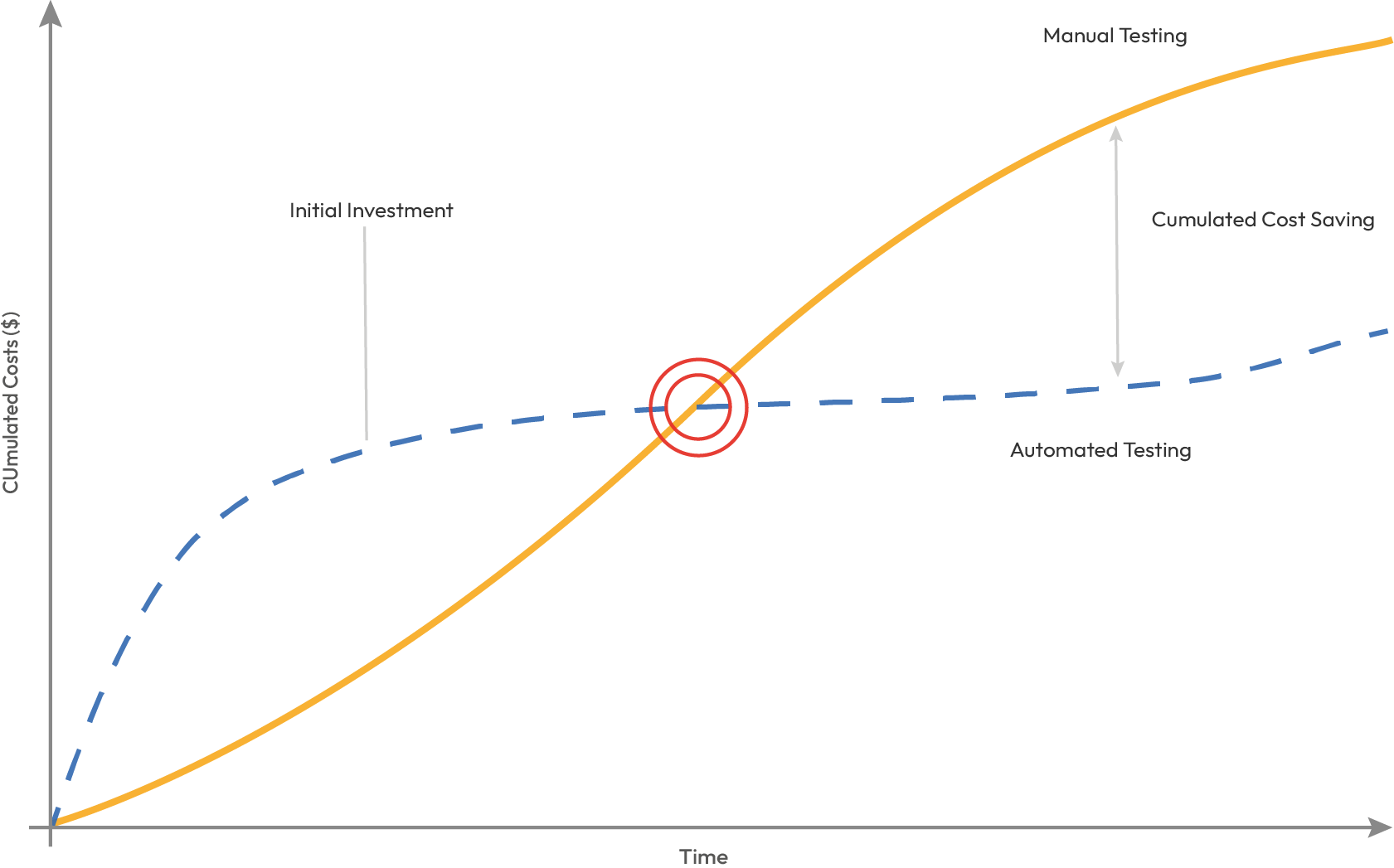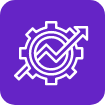QUALITY ASSURANCE
QA Automation
QA Automation, or test automation, is a practice that uses software tools and scripts to automate quality testing of applications and systems. Testers-developers, using a programming language and other tools, develop test cases that will be executed automatically.
During this process, the results are verified and the performance of the software is evaluated. This technique is especially valuable in agile and continuous development environments, as it speeds up test execution, increases efficiency and contributes to the early detection of errors, thus improving quality and reducing costs in the long term.
What are the advantages?
Efficiency and Speed
Reduces repetitive manual work, especially in regression testing after each implementation, allowing more time for exploratory testing.
Consistency and Reliability
Increases consistency, repeatability and reliability in product testing, reducing time to market.
High Return on Investment
In large projects, it helps reduce testing and bug detection costs, offering reuse and objective reporting.
Reusability
Automated test cases can be run over and over again in minutes, providing a high degree of coverage and generating objective reports.
CI/CD integration
They can be scheduled to run at any time without human intervention, integrating seamlessly into Continuous Integration/Continuous Delivery (CI/CD) environments.
What do we need to consider?
QA Automation requires an initial investment of time and, once implemented, requires constant maintenance similar to the software code, demands a high level of technical knowledge to carry out, and does not provide complete feedback on subjective aspects of the software such as system usability.
When do we choose this methodology?
When there are complex test cases that consume a lot of time.
When multiple tests need to be executed over a period of time.
When the system is constantly evolving and there are many changes.
When follow-up evaluations are required for the proyect.
When evidence is needed regression in extensive flows.
When tests are run on
multiple platforms.
Analyzing Costs
Taking into account the previous points, the following comparison graph of the cost of manual tests and automated tests is analyzed where we can conclude that, in the cases that are recommended to be automated, there is a moment from which a marked saving is generated in the costs of software quality assurance.

Does it replace manual testing?
Absolutely not! Manual testing remains crucial in small projects, for test cases executed in a limited manner, very dynamic systems or with not very large changes. It is also essential for exploratory and usability testing, where human intervention is required to evaluate subjective aspects and user experience.

In Conclusion:
It is important to analyze each project to decide when it is appropriate to automate tests to improve efficiency and cost savings. Manual testing remains essential for small projects, specific tests and subjective evaluations such as usability. The optimal strategy involves a balanced approach, preserving the critical role of manual testing in particular contexts and automation for large, repetitive tasks.










